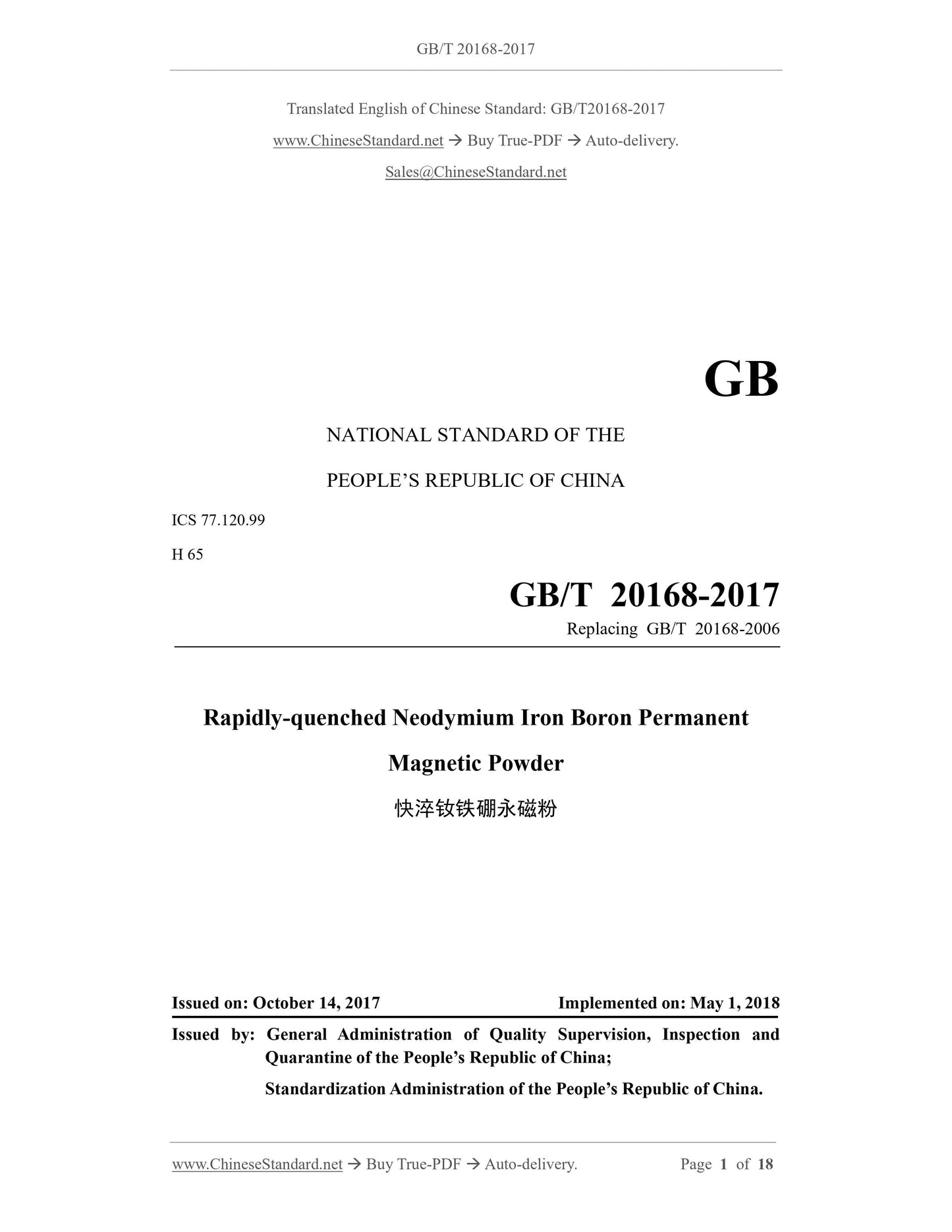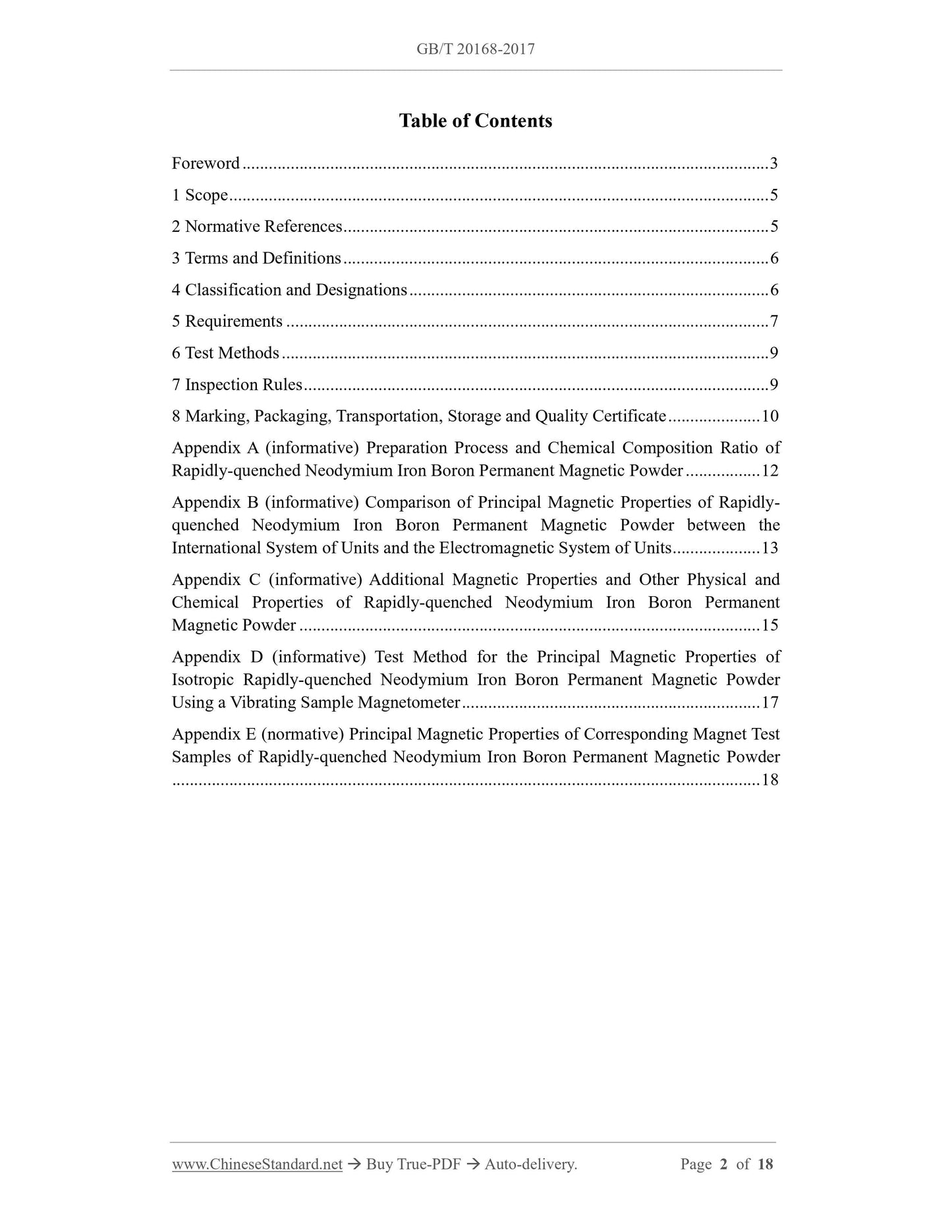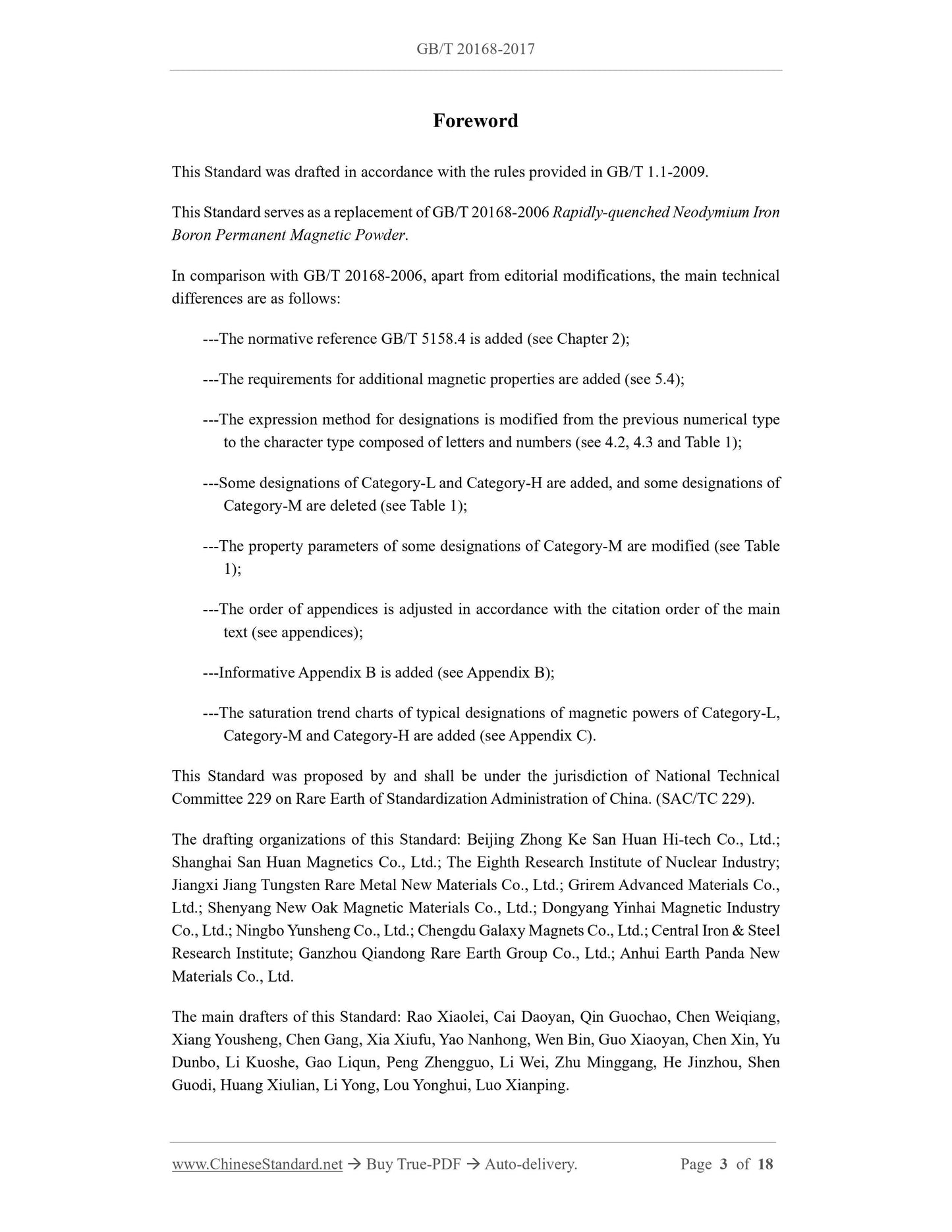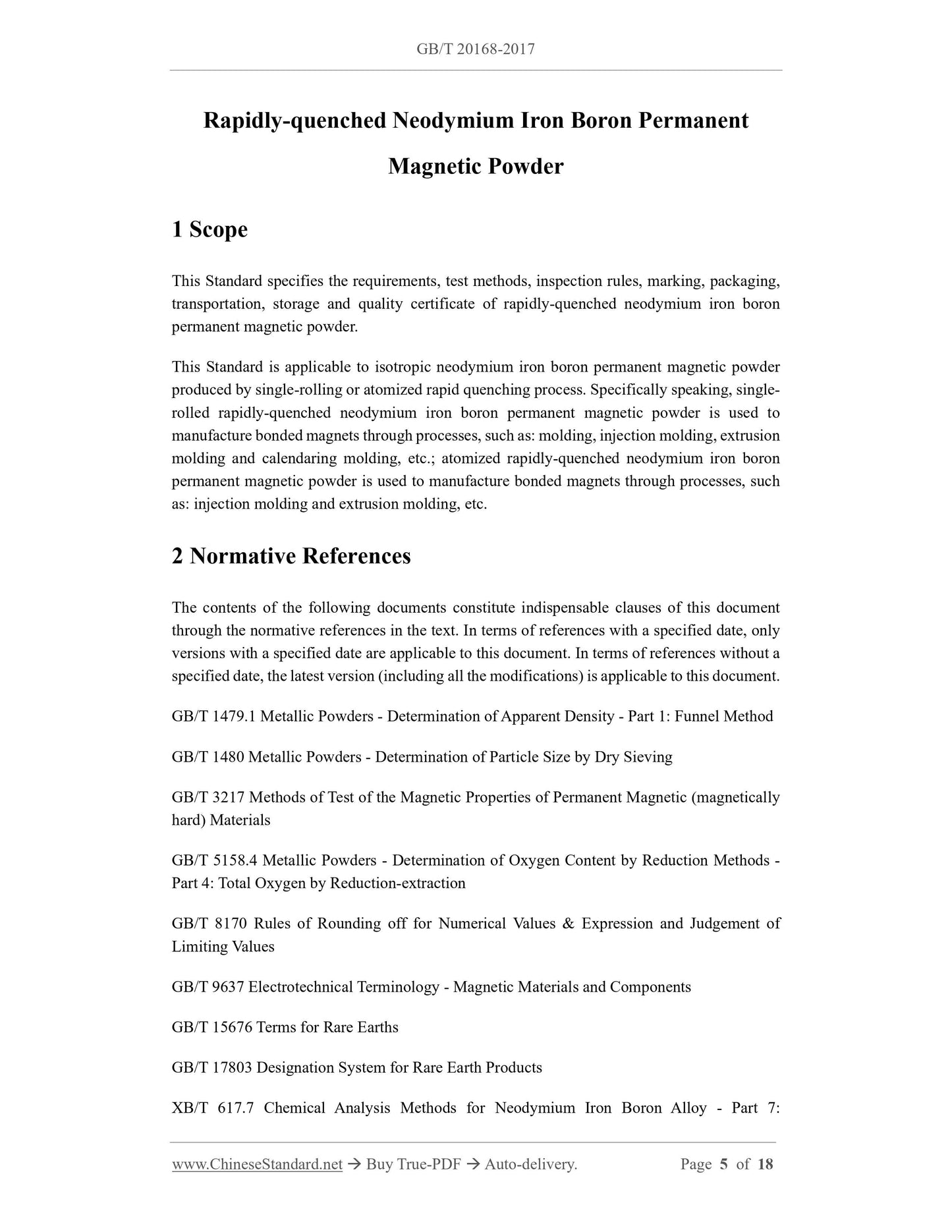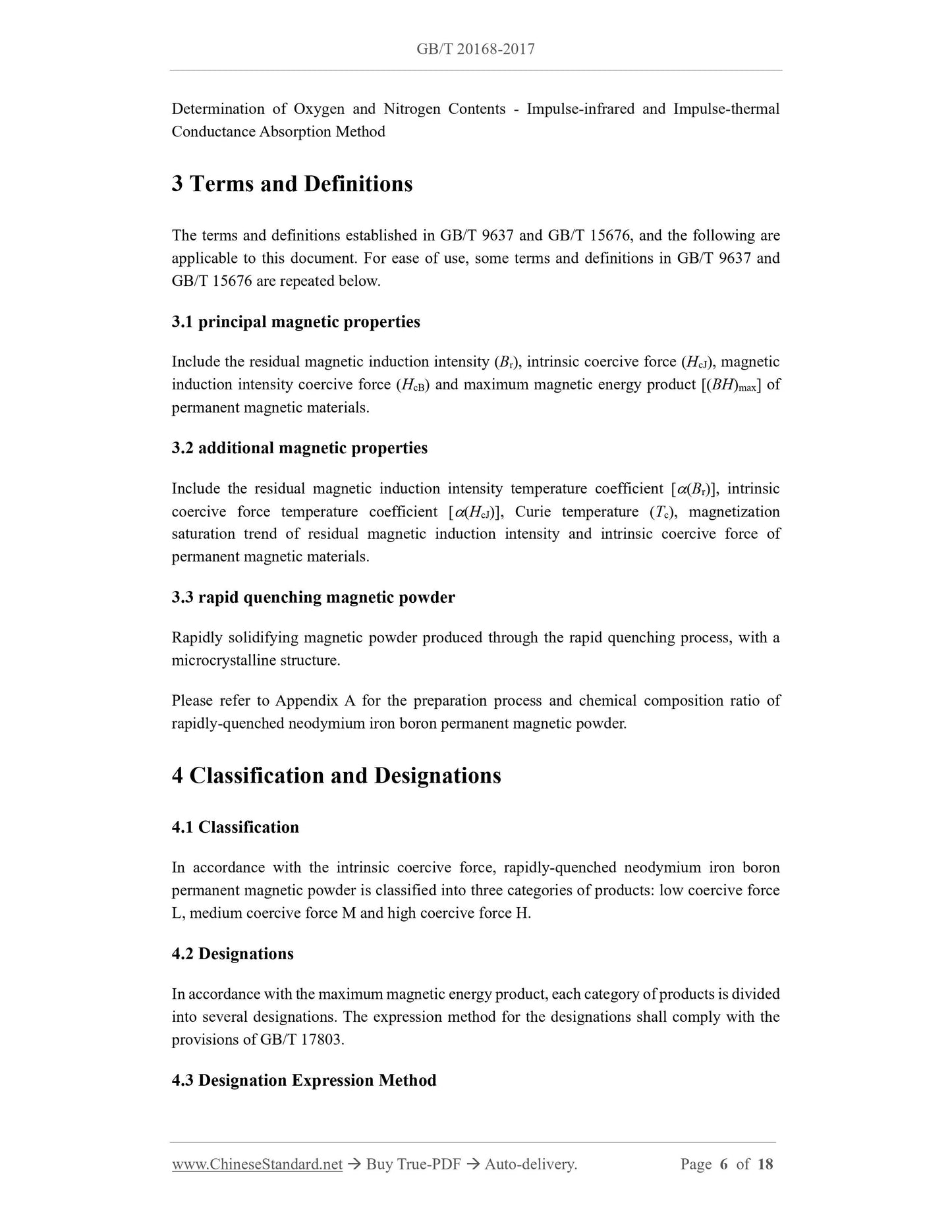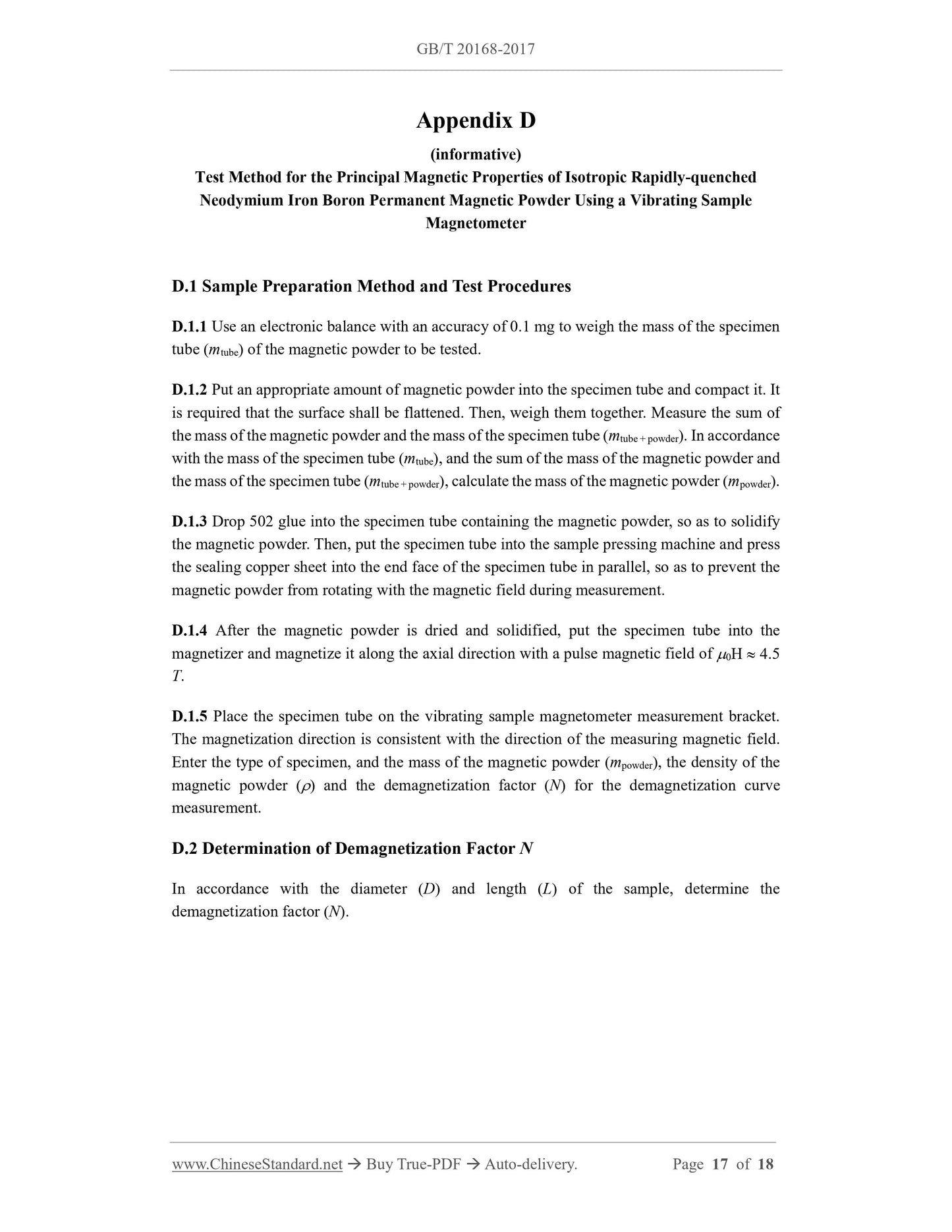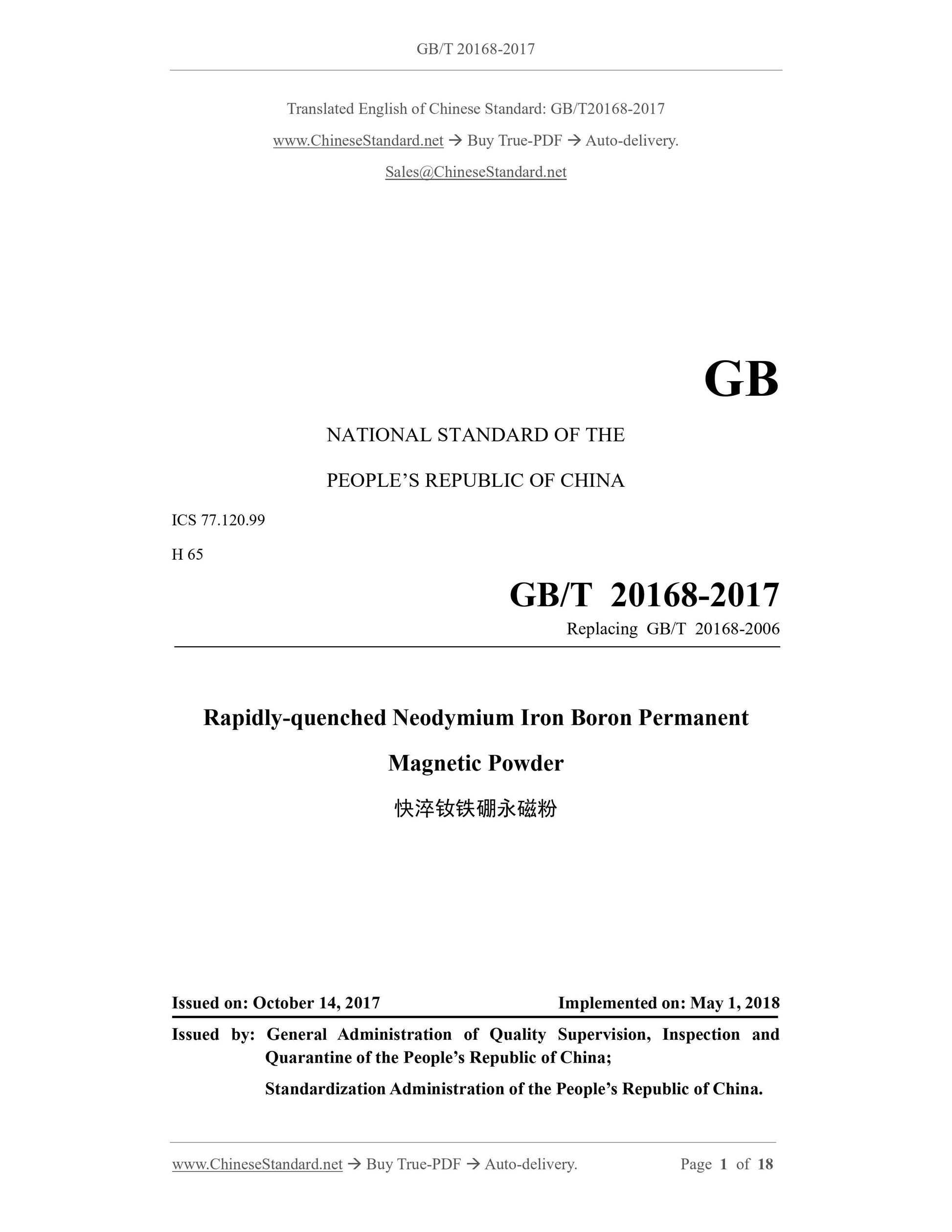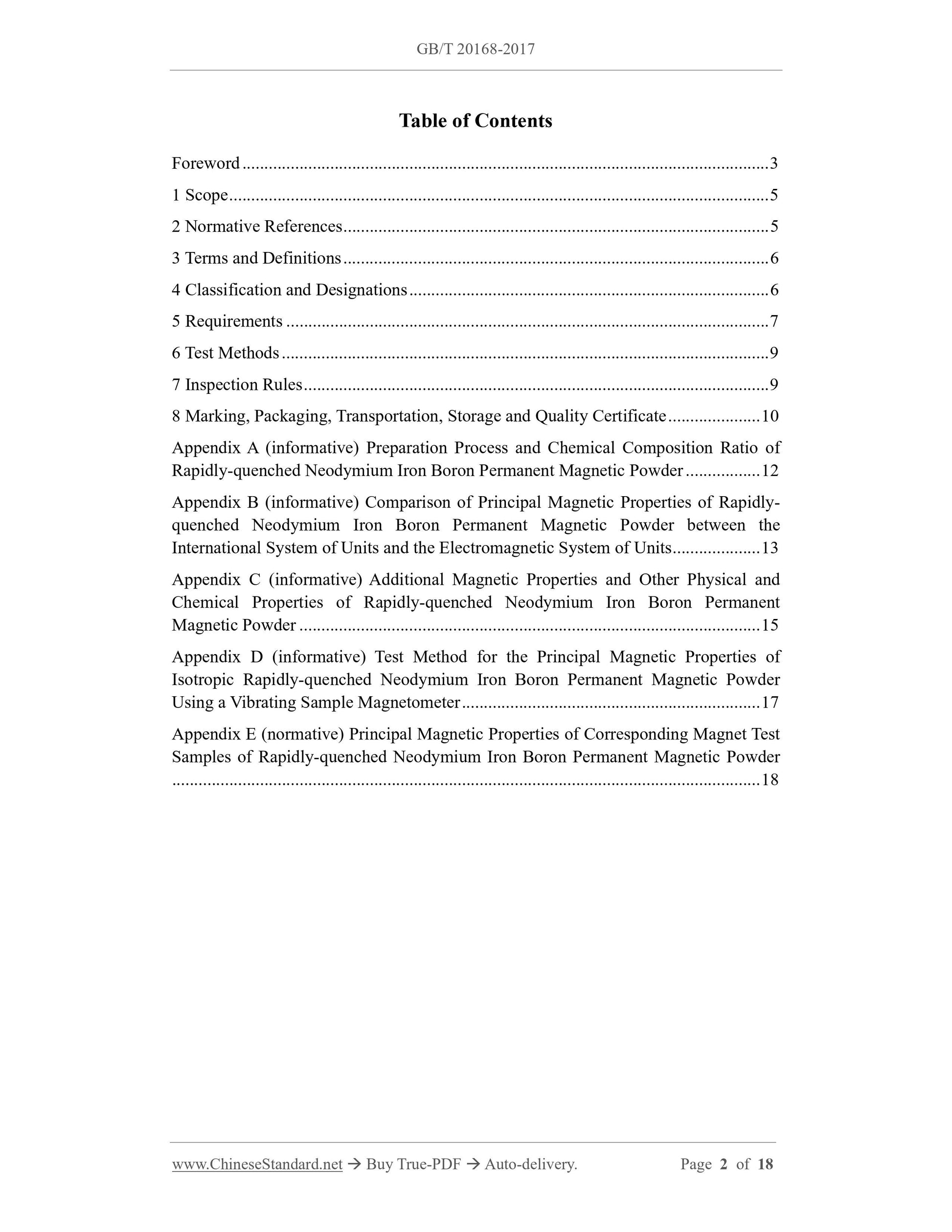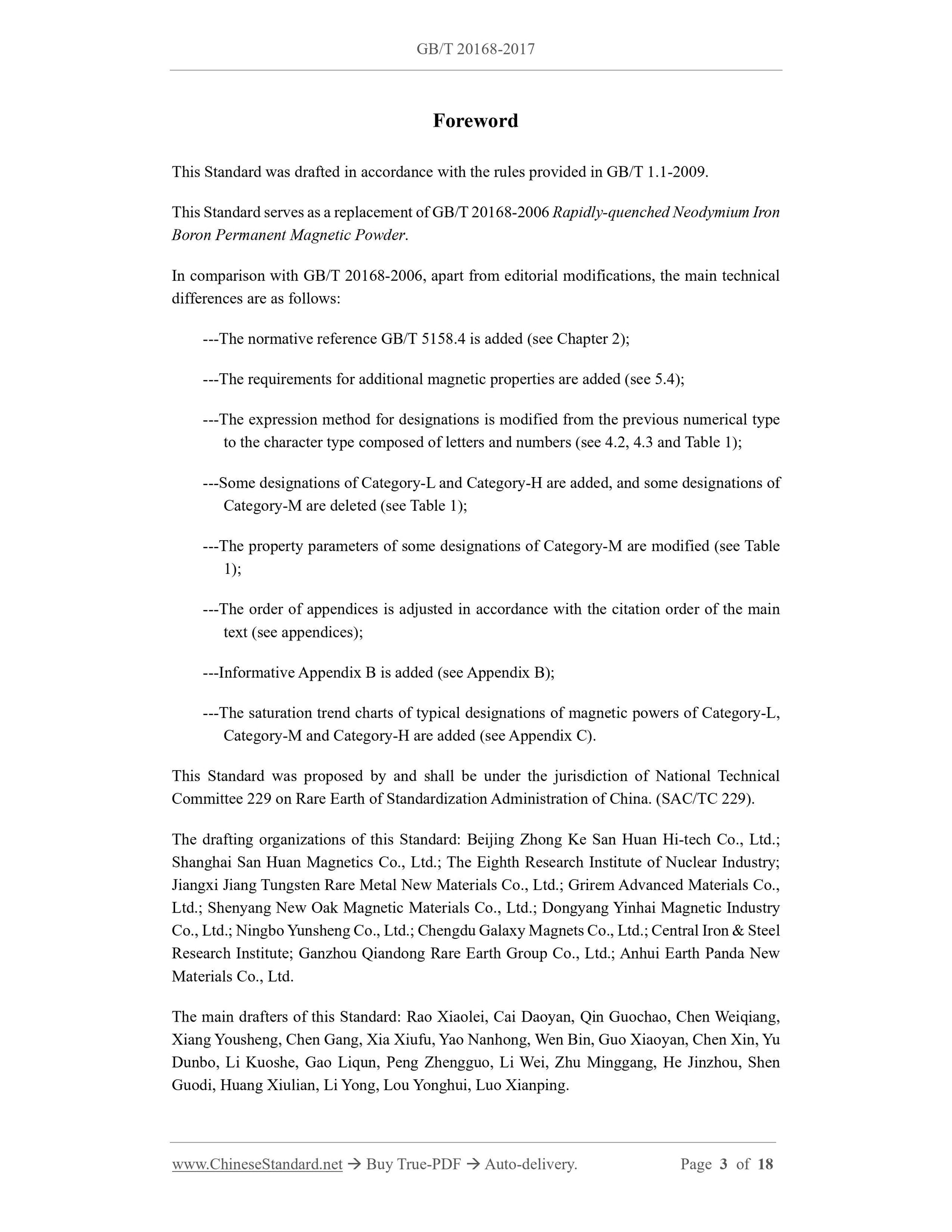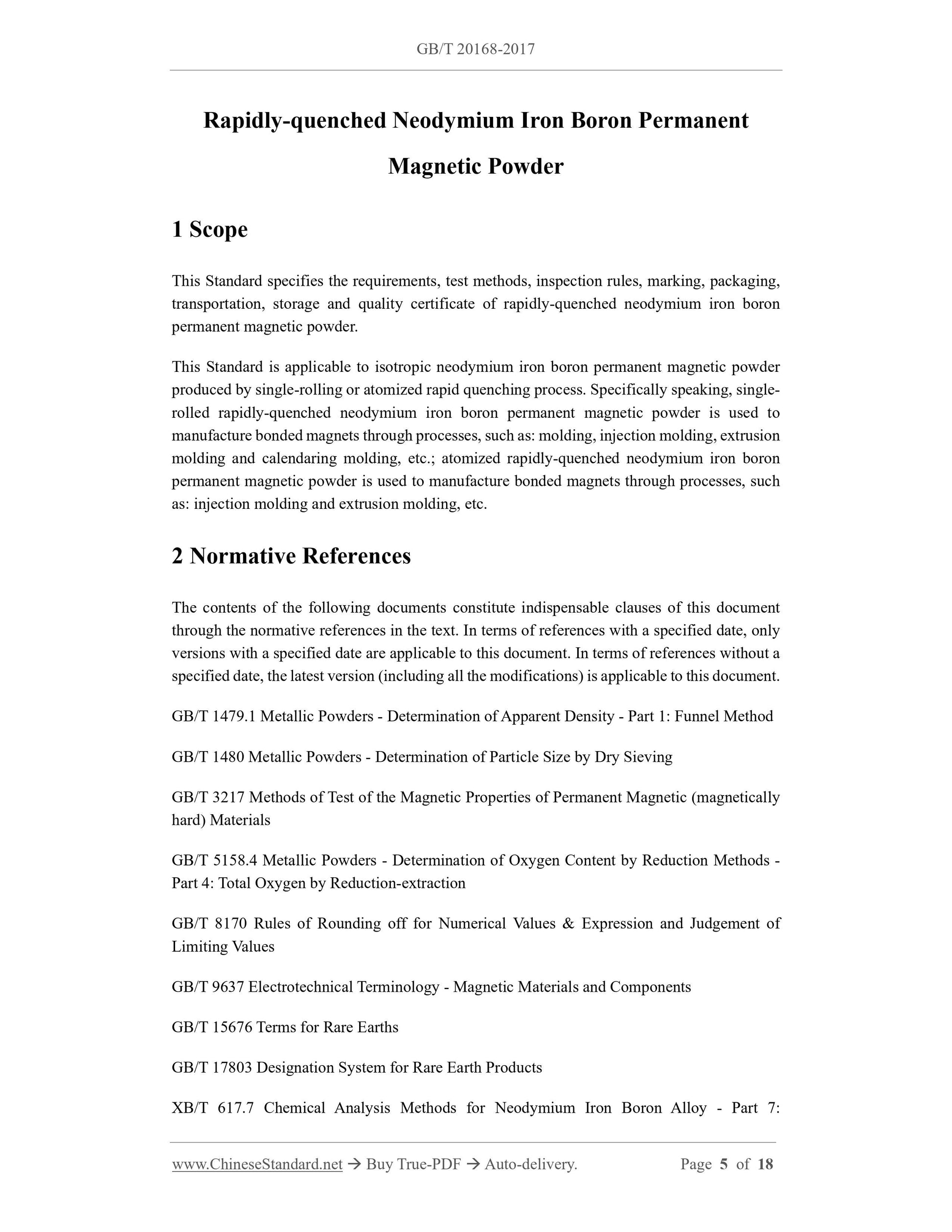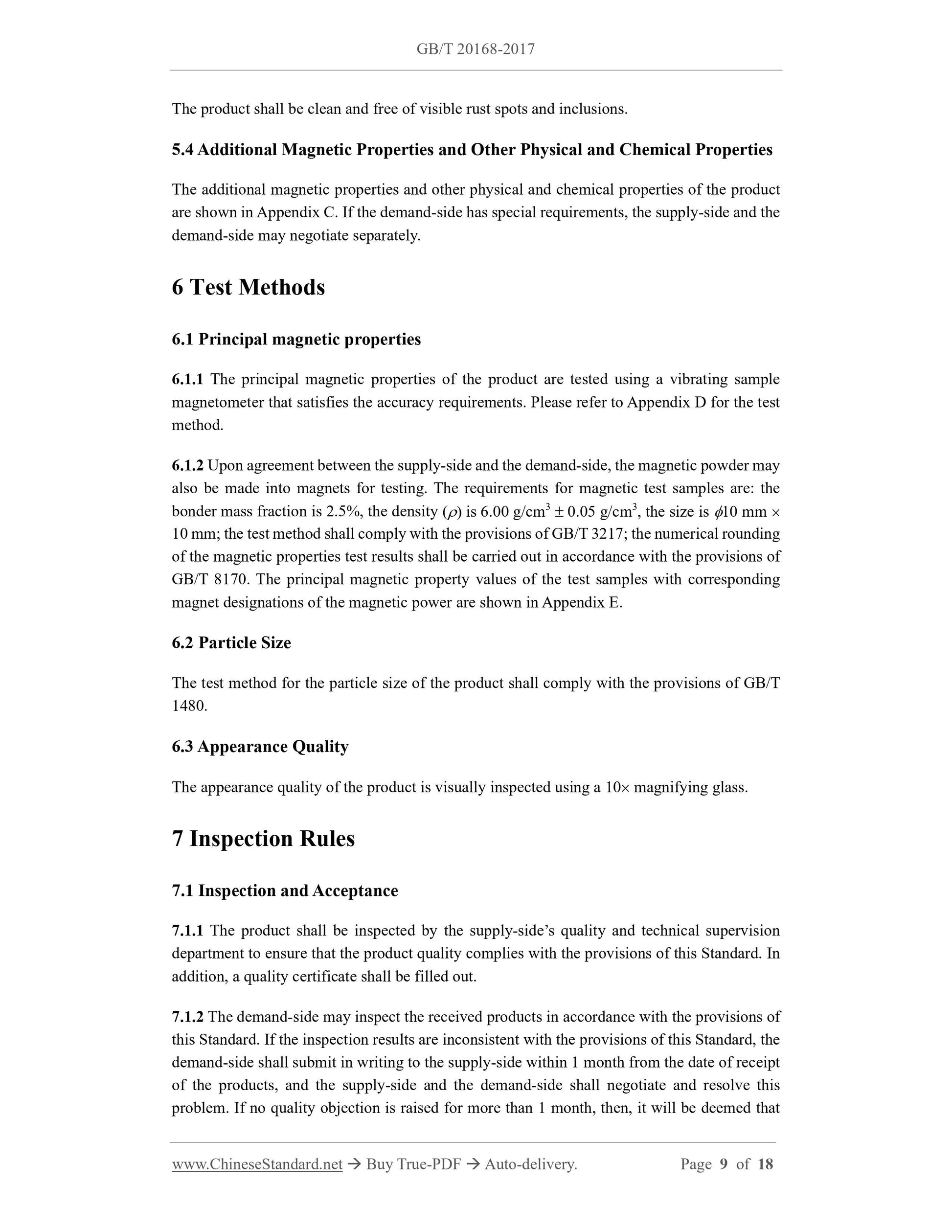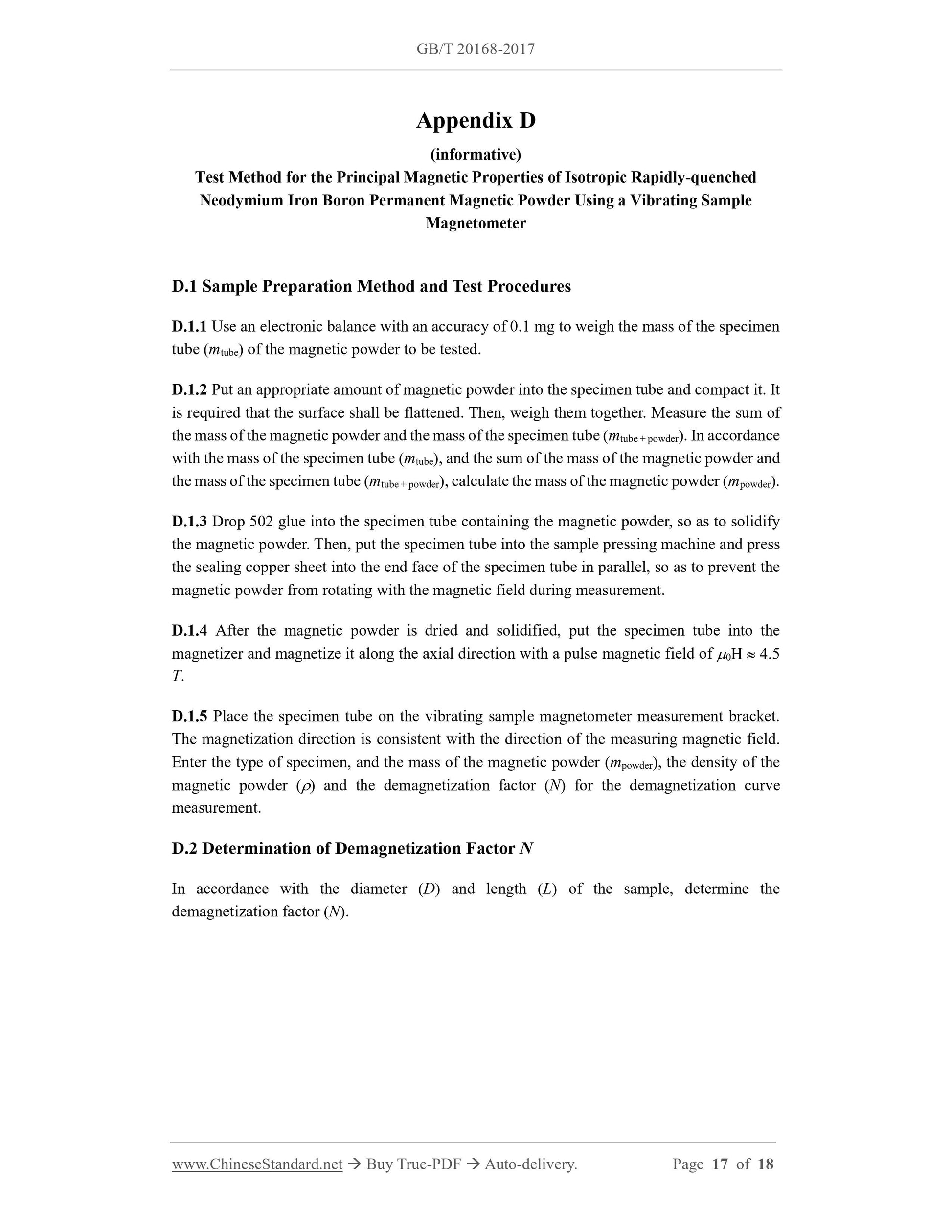1
/
of
7
www.ChineseStandard.us -- Field Test Asia Pte. Ltd.
GB/T 20168-2017 English PDF (GB/T20168-2017)
GB/T 20168-2017 English PDF (GB/T20168-2017)
Regular price
$225.00
Regular price
Sale price
$225.00
Unit price
/
per
Shipping calculated at checkout.
Couldn't load pickup availability
GB/T 20168-2017: Rapidly quenched neodymium iron boron permanent magnetic powder
Delivery: 9 seconds. Download (and Email) true-PDF + Invoice.Get Quotation: Click GB/T 20168-2017 (Self-service in 1-minute)
Newer / historical versions: GB/T 20168-2017
Preview True-PDF
Scope
This Standard specifies the requirements, test methods, inspection rules, marking, packaging,transportation, storage and quality certificate of rapidly-quenched neodymium iron boron
permanent magnetic powder.
This Standard is applicable to isotropic neodymium iron boron permanent magnetic powder
produced by single-rolling or atomized rapid quenching process. Specifically speaking, single-
rolled rapidly-quenched neodymium iron boron permanent magnetic powder is used to
manufacture bonded magnets through processes, such as: molding, injection molding, extrusion
molding and calendaring molding, etc.; atomized rapidly-quenched neodymium iron boron
permanent magnetic powder is used to manufacture bonded magnets through processes, such
as: injection molding and extrusion molding, etc.
Basic Data
| Standard ID | GB/T 20168-2017 (GB/T20168-2017) |
| Description (Translated English) | Rapidly quenched neodymium iron boron permanent magnetic powder |
| Sector / Industry | National Standard (Recommended) |
| Classification of Chinese Standard | H65 |
| Classification of International Standard | 77.120.99 |
| Word Count Estimation | 14,113 |
| Date of Issue | 2017-10-14 |
| Date of Implementation | 2018-05-01 |
| Issuing agency(ies) | General Administration of Quality Supervision, Inspection and Quarantine of the People's Republic of China, Standardization Administration of the People's Republic of China |
Share
